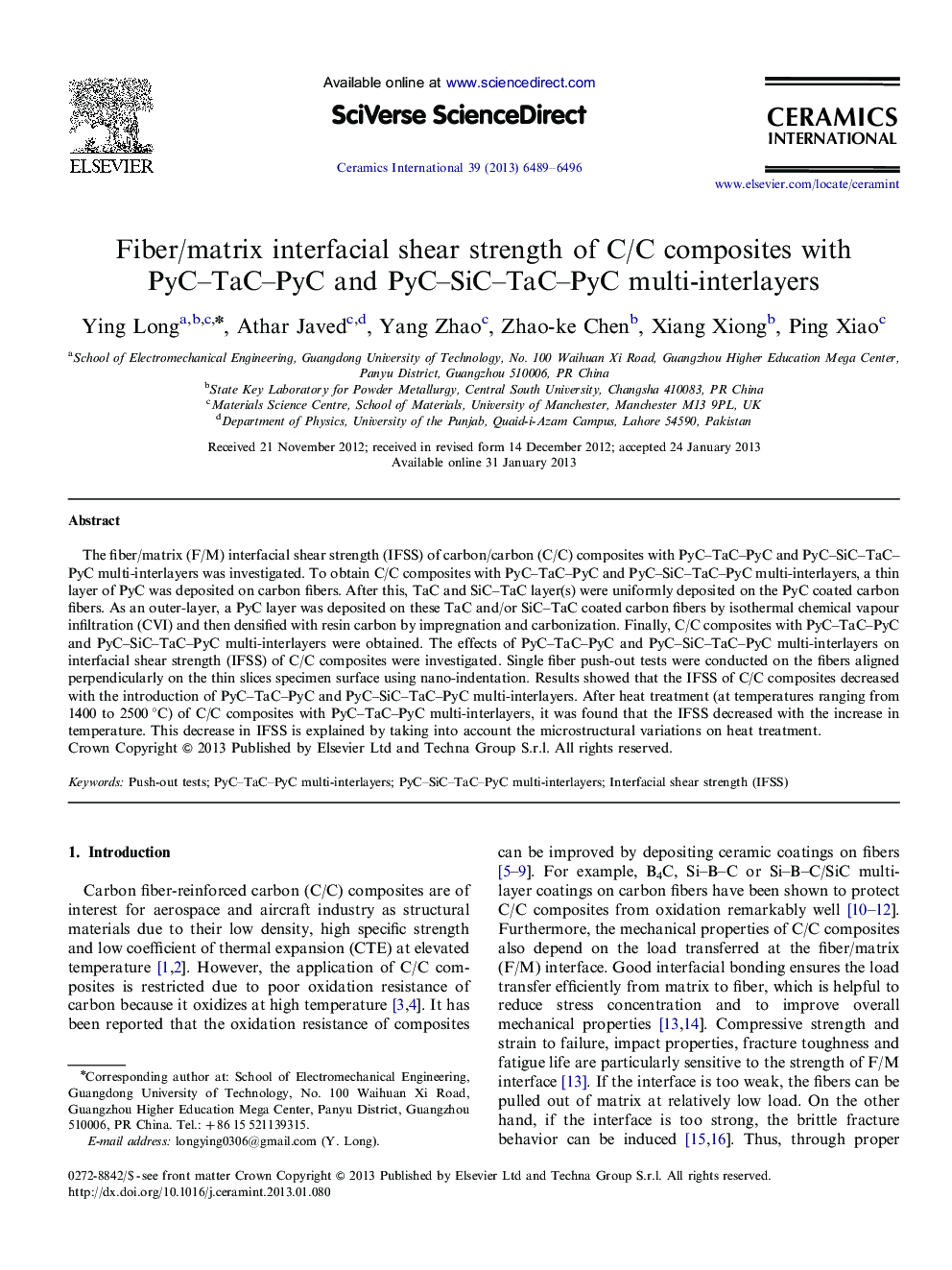| Article ID | Journal | Published Year | Pages | File Type |
|---|---|---|---|---|
| 1462777 | Ceramics International | 2013 | 8 Pages |
The fiber/matrix (F/M) interfacial shear strength (IFSS) of carbon/carbon (C/C) composites with PyC–TaC–PyC and PyC–SiC–TaC–PyC multi-interlayers was investigated. To obtain C/C composites with PyC–TaC–PyC and PyC–SiC–TaC–PyC multi-interlayers, a thin layer of PyC was deposited on carbon fibers. After this, TaC and SiC–TaC layer(s) were uniformly deposited on the PyC coated carbon fibers. As an outer-layer, a PyC layer was deposited on these TaC and/or SiC–TaC coated carbon fibers by isothermal chemical vapour infiltration (CVI) and then densified with resin carbon by impregnation and carbonization. Finally, C/C composites with PyC–TaC–PyC and PyC–SiC–TaC–PyC multi-interlayers were obtained. The effects of PyC–TaC–PyC and PyC–SiC–TaC–PyC multi-interlayers on interfacial shear strength (IFSS) of C/C composites were investigated. Single fiber push-out tests were conducted on the fibers aligned perpendicularly on the thin slices specimen surface using nano-indentation. Results showed that the IFSS of C/C composites decreased with the introduction of PyC–TaC–PyC and PyC–SiC–TaC–PyC multi-interlayers. After heat treatment (at temperatures ranging from 1400 to 2500 °C) of C/C composites with PyC–TaC–PyC multi-interlayers, it was found that the IFSS decreased with the increase in temperature. This decrease in IFSS is explained by taking into account the microstructural variations on heat treatment.
